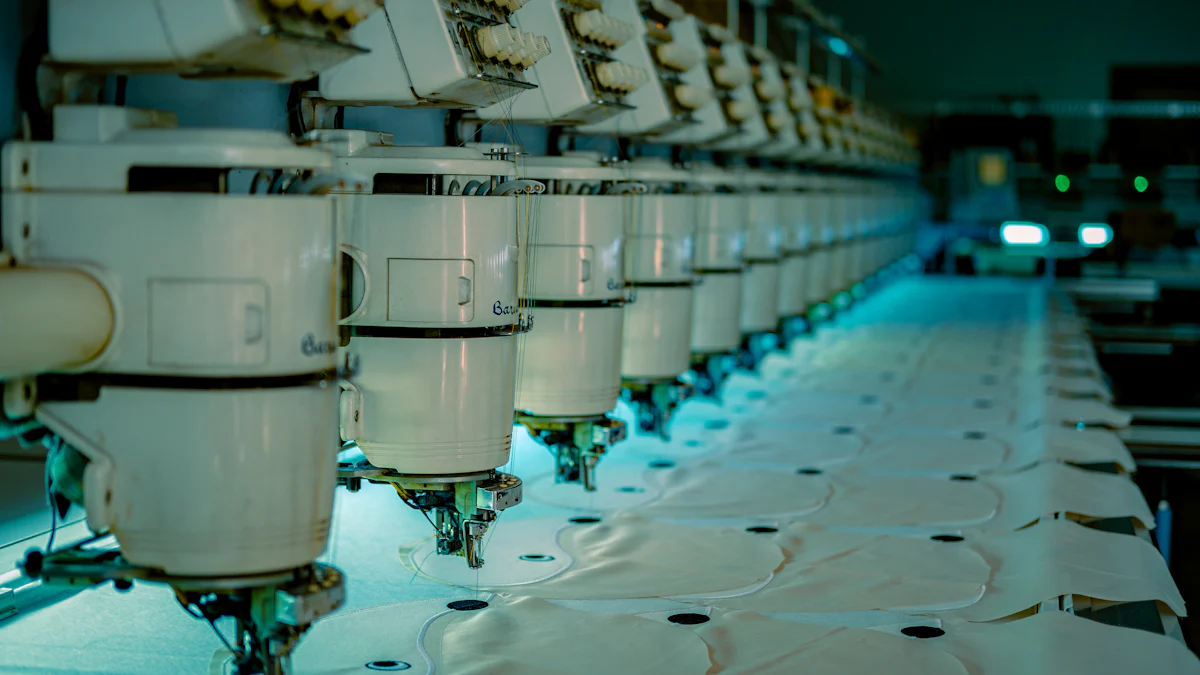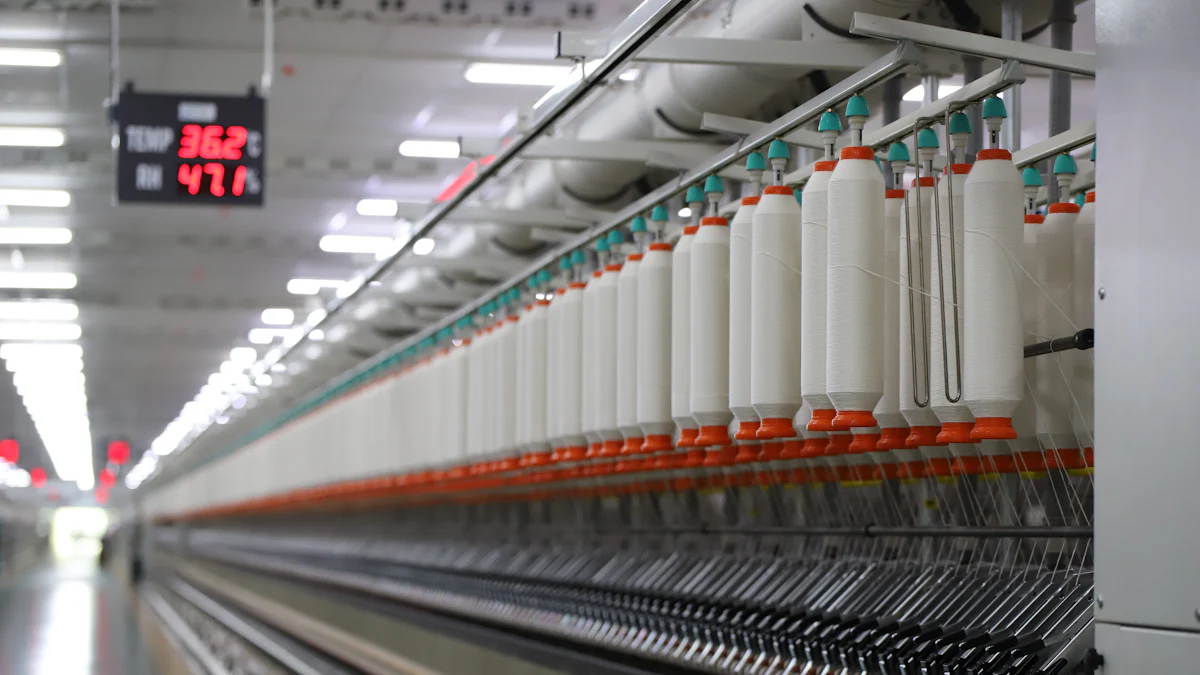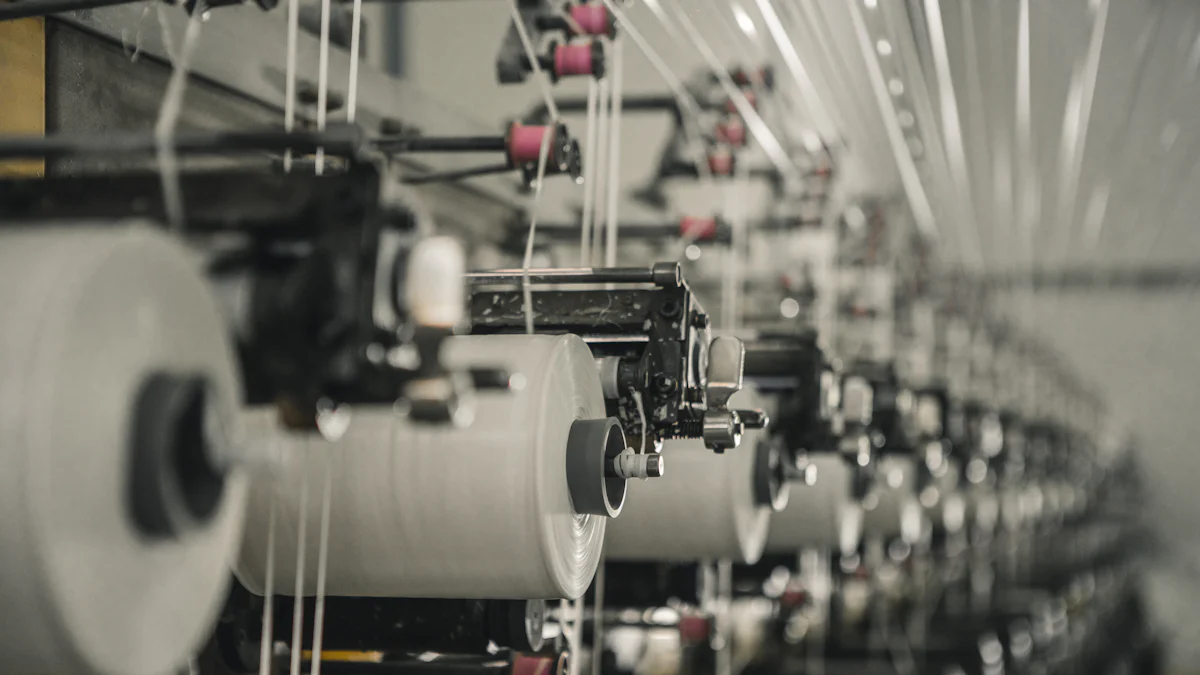
News

The textile industry faces significant energy challenges due to its high consumption and low efficiency. Spinning and weaving alone account for over half of the energy used. A frequency converter in textile machinery optimizes motor speed, reducing vibration and noise. By using VFD technology, you can enhance efficiency, cut costs, and improve machine performance.
Key Takeaways
Frequency converters control motor speed to save energy in machines. Changing motor speed stops energy waste and boosts efficiency.
Variable frequency drives help motors start smoothly, avoiding power spikes. This lowers wear on machines and cuts repair costs.
Automation with these converters makes production faster and uses less energy. They give exact control, improving quality and reducing waste.
Optimizing Motor Speed with Frequency Converters

Adjusting motor speed for energy efficiency
A frequency converter in textile machinery allows you to adjust motor speed with precision. By controlling the frequency of the electrical supply, it ensures that motors operate at the optimal speed for each task. This adjustment reduces unnecessary energy consumption and enhances overall efficiency. For example, in processes like spinning and weaving, maintaining the correct motor speed prevents overloading and minimizes energy waste. You can achieve significant energy savings by tailoring motor performance to the specific demands of your production line.
Matching speed to production requirements
Matching motor speed to production requirements is essential for maintaining quality and reducing costs. Frequency converters enable stepless speed regulation, allowing you to fine-tune operations without abrupt changes. This capability ensures that fabric tension and flow remain consistent, which is critical in applications like printing and dyeing. By using variable frequency drives, you can avoid defects caused by misaligned fabric or uneven tension. Additionally, optimized motor speed leads to measurable energy savings. For instance, spinning and weaving machines can save up to 11 kWh per machine daily, translating to 242 kWh for 22 machines.
Applications in spinning and weaving machines
The application of frequency converters in spinning and weaving machines demonstrates their versatility. These machines benefit from precise speed control, which enhances performance and reduces wear and tear. By using ac variable frequency technology, you can maintain consistent output while minimizing energy consumption. Frequency converters also improve the quality of the final product by ensuring uniformity in processes. Whether you are managing high-speed spinning or intricate weaving patterns, these drives provide the control needed to meet production goals efficiently.
Reducing Energy Waste with Variable Frequency Drives
Soft starts to minimize power surges
Variable frequency drives play a vital role in reducing energy waste by enabling soft starts for textile machinery. When motors start abruptly, they draw a large amount of current, causing power surges and unnecessary energy consumption. By gradually increasing motor speed during startup, variable frequency drives prevent these surges. This not only reduces energy waste but also minimizes mechanical stress on components, enhancing their durability. For example, in cotton spinning equipment, soft starts ensure smoother operations, leading to better performance and lower maintenance costs.
Extending machinery lifespan through controlled operations
Controlled operations facilitated by frequency converters significantly extend the lifespan of textile machinery. By regulating motor speed and torque, these drives reduce wear and tear on critical components. This is particularly beneficial for high-demand applications like spinning and weaving, where consistent performance is essential. Additionally, ac variable frequency technology optimizes energy use during low-demand periods, further reducing operational strain. Regular maintenance, such as cleaning and monitoring operating temperatures, ensures that frequency converters continue to deliver energy efficiency and reliability over time.
Examples in dyeing and finishing processes
The application of variable frequency drives in dyeing and finishing processes highlights their versatility. These drives provide precise control over speed and agitation, ensuring uniform results and improved quality. For instance, Lekos Dye and Finishing implemented VFDs on pumps, achieving monthly savings of $10,000 on electricity bills. The drives also enhanced the efficiency of smog arrestor equipment, reducing emissions. By managing speed effectively, VFDs optimize energy consumption and improve production efficiency in dyeing and finishing operations.
Enhancing Efficiency in the Textile Industry

Precise control of production processes
You can achieve precise control over textile production processes by using frequency converters. These devices allow you to regulate motor speeds in spinning, weaving, and dyeing machines, ensuring consistent performance. For instance, in the spinning process, high-frequency variable frequency drives (VFDs) maintain steady yarn quality by controlling machine speed. This reduces defects and enhances overall production efficiency. Similarly, in printing and dyeing, frequency converters adjust motor speeds to maintain proper fabric tension and flow. This precision ensures uniformity, improving the quality of the final product while minimizing waste.
Improving automation and reducing energy consumption
Automation in the textile industry becomes more efficient with frequency converters. These devices provide precise control and feedback, enabling machines to perform tasks with greater accuracy. Automated systems equipped with VFDs optimize energy use by adjusting motor speeds based on real-time production needs. For example, spinning machines with high-frequency VFDs deliver consistent yarn quality, while weaving machines achieve better fabric consistency. Automation also reduces energy consumption by integrating advanced sensors and controls. This not only lowers operational costs but also enhances production efficiency and competitiveness. Additionally, automated systems improve workplace safety by handling hazardous tasks.
Benefits for natural fiber spinning and printing machines
Frequency converters offer significant benefits for natural fiber spinning and printing machines. By optimizing motor speeds to match specific process requirements, they reduce energy consumption and improve production efficiency. For example, in cotton spinning equipment, frequency converters ensure smooth operations by maintaining the correct tension and flow of fibers. In printing machines, they enhance precision, resulting in uniform patterns and reduced defects. These improvements lead to better product quality and lower energy costs. Furthermore, the environmental benefits include reduced waste and a smaller carbon footprint, making frequency converters a sustainable choice for textile manufacturers.
Frequency converters play a vital role in modern textile machinery. They optimize motor speed, reducing vibration and noise while enhancing energy efficiency. By minimizing energy waste and improving process control, they ensure consistent quality and lower operational costs. Adopting this technology supports sustainability and positions your business for future advancements in automation and energy savings.
FAQ
What is the role of frequency converters in textile machinery?
Frequency converters regulate motor speed and torque, ensuring precise control over equipment. This reduces energy consumption, enhances efficiency, and extends the lifespan of machinery.
How do frequency converters contribute to automatic energy-saving operation?
They adjust motor speed based on production needs, minimizing unnecessary energy use. This automatic energy-saving operation optimizes processes and reduces operational costs.
Can frequency converters improve industrial automation technology in textiles?
Yes, they enhance industrial automation technology by providing precise control and feedback. This improves equipment performance, reduces energy consumption, and ensures consistent production quality.
Please give us a message